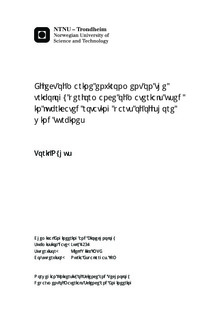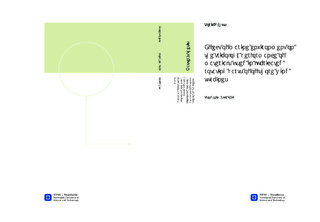| dc.description.abstract | The use of offshore wind turbines as a source of renewable energy is promising. However, many challenges have to be solved before they will be cost effective. The operation time, without any maintenance required, is desired to be as long as possible, because downtime and maintenance costs are high. Thus it is important that the rotating parts in the turbine have a long operational time. The harsh marine environment, combined with the desire for elongated operating times and little or no maintenance, give rise to many tribological challenges. It is important that the chosen materials and lubricants can withstand the marine environment, and the high loads. The effect of marine environment on lubricating properties of lubricants is not well understood. The objective of this thesis has been to investigate this effect. Two lubricants that are commonly used as gear lubricants in onshore wind turbines were tested in this work; polyalphaolefin and polyalkylene glycol. They were both contaminated with different amounts of artificial seawater in order to investigate the effect on the lubricating properties. The lubricants were tested in a rotating ball-on-disc tribometer, with self-mated stainless steel, and self-mated silicon carbide. Stainless steel was selected as it is commonly used in gear bearings, whereas silicon carbide was chosen due to its promising excellent properties. The results obtained from this work show that PAO has a very low saturation limit for water, and an emulsion will be formed even at low contamination levels. This made the lubricant unstable, and the measured COF were unstable. It was found that the amount of two-body abrasive wear increased as a function of seawater content. The PAG lubricant managed to dissolve much larger quantities of seawater that PAO. But even though the system was one-phased, the results for COF were unstable. Wear induced pitting was found for both clean and contaminated lubricant. It is believed that it is caused by the additive package of the lubricant. For dry tribological testing COF was found to be mush less for self-mated silicon carbide than for self-mated stainless steel. This is as expected, since silicon carbide has shown outstanding tribological properties in previous work.For self-mated silicon carbide testing only abrasive wear could be found for both dry contact, and lubricated. The results from PAO contaminated with seawater, showed a clear increase in COF as a function of seawater content. Further, the COF all stabilized after the running-in period. PAG showed no such trend with increasing amounts of seawater, but the standard deviation of the measurements increased. | nb_NO |

